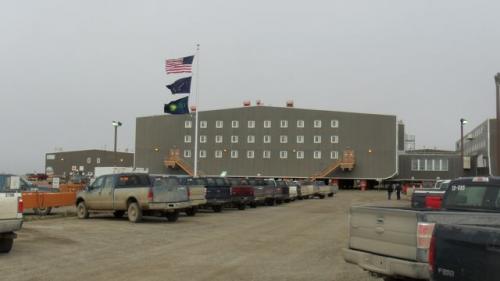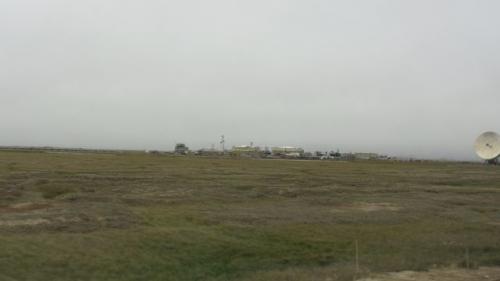Prudhoe Bay is a wild place. Although the sky never goes completely dark, frequent fog often limits vision to a few car lengths. Temperatures reach highs in the 30’s in August, and polar bears, musk oxen, and caribou wander at will. Despite this austere scene, Greater Prudhoe Bay is - in most regards - state of the art. Multiple flights depart and arrive from two airports several times a day. High speed internet links different outpost across the tundra almost instantly, and inside these outposts, steak dinners, flat screen tvs, and up-to-date workout facilities accommodate the seasonal and permanent workers of BP’s oilfield operations.

Alaska Fish and Game publishes a handbook outlining regulations for subsistence hunting across the state. Subsistence intake is allowed for residents of any area besides those identified as “urban:” typically the city-centers like Anchorage, Fairbanks, and Juneau. But Prudhoe Bay – located 250 miles north of the Arctic Circle, a municipality that the 2000 census deemed had 5 permanent residents – is also considered an “urban” area due to the infrastructure and itinerant population brought on by the oil fields.

Our badges acquired in Anchorage were put to use as we arrived on the oilfield. Security checkpoints monitor who enters and exits the field 24 hours a day. During our induction briefing, BP personnel issued the team radios and bear sprays, and reiterated the importance of being safe and responsible. Although there is an emergency clinic at the BOC, any serious ailment or injury must be treated in Anchorage, over 800 miles away. After BP's briefing, the team returned to our makeshift base camp at the Arctic Caribou Inn. There, we installed new software, entered points into GPSA Global Positioning System (GPS) is a satellite-based navigation system used to track the location or position of objects on the Earth’s surface. units, and detailed the plan for our first full field day tomorrow.
‘Til then,
Josh


Comments